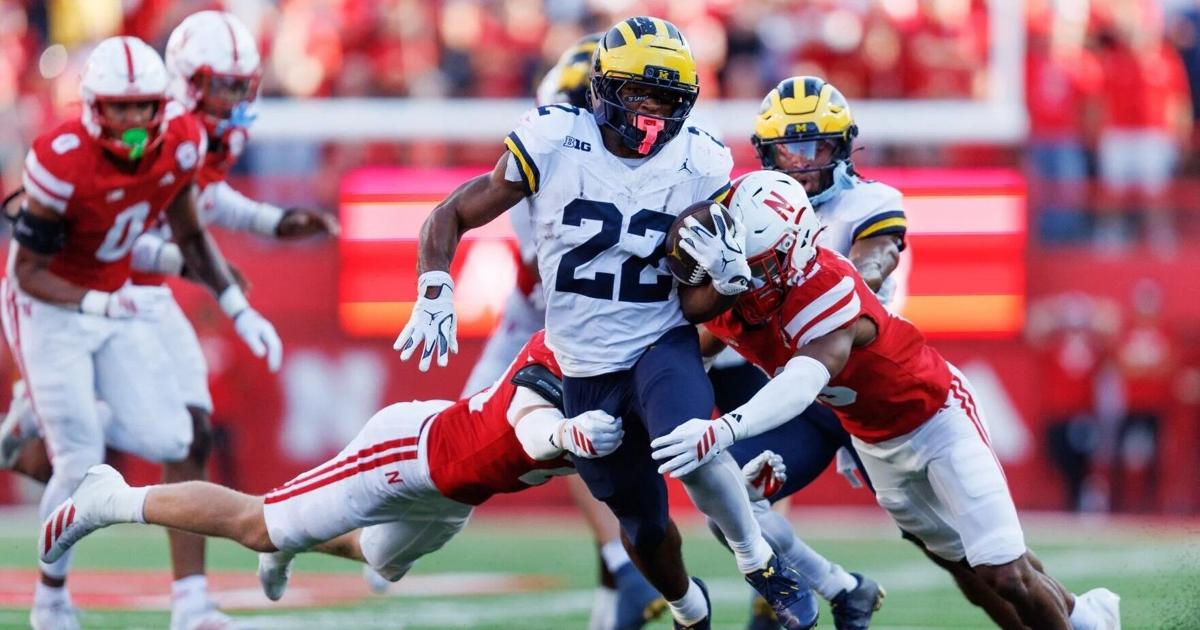Copyright omaha

LINCOLN — The interview stretching six, eight, 10, 12 minutes after an overtime loss, Nebraska’s defensive coordinator traveled deeper into the inner circle of his thoughts before peering out, at the reporters arrayed around him, to ask a question. “Do you see the strain?” Bob Diaco asked. “Do you see it, or no? Or is it just something that I’m missing?” His defense had just allowed 232 rushing yards in a 31-24 defeat to Northwestern, and his unit was about to allow 409, 263 and 313 rush yards in the final three games before he, then coach Mike Riley and the rest of the staff was broomed out fewer than 24 hours after Black Friday in 2017. Diaco left North Stadium in sunglasses and an argyle sweater. What is less remembered, perhaps even forgotten, is that Diaco’s defense, through the first five games of that season, allowed just 105.8 rushing yards per game and 3.36 yards per carry. That unit held until Wisconsin and Jonathan Taylor came to town, ripping off long runs as Diaco’s blitzes got popped by the Badgers’ power rush attack. “You’re flying at 40,000 feet and even just a small pinhole crack in the window,” Diaco said after the 38-17 loss to UW, “it obviously causes a major problem in the cabin.” Nebraska’s run in the Big Ten has been rocky. Including its lone conference title game appearance in 2012, NU is 53-70 since joining the league. Its bugaboo for much of this era, starting with the inaugural game at Wisconsin in 2011, has been a sheer inability to stop an opponent’s game. Matt Rhule’s arrival changed that narrative. Not necessarily the results — Rhule is 6-13 so far in league games — but the reasons. NU allowed just 109 yards per game to Big Ten teams in 2023 and 117 in 2024. (Diaco’s defense allowed 245.) Flush with seasoned defensive linemen and linebackers, the Huskers ran, hit and held up in the run game. Through four games in 2025, Nebraska’s pass defense ranks among the nation’s best — nearly impenetrable, allowing 3.4 yards per attempt. The run defense allows 5.18 yards per carry. Cincinnati gained 202 yards. Michigan gained 286, producing 37, 54 and 75-yard touchdown runs. “You’re stopping the run, you’re stopping the run and you’re like ‘I feel good about this’ and then bang!” Rhule said Monday. “Explosive play.” Broadly, NU coaches knew the loss of linemen like Ty Robinson, Nash Hutmacher and Jimari Butler — coupled with linebacker John Bullock’s departure to the NFL — would affect the run defense. In an effort to build up the returnees, Rhule said at Big Ten Media Days that defensive line would be “hell on wheels” this season. "When I go to bed at night, the things that keep me up at night, it's not the D-line," Rhule said on the Huskers Radio Network. At the front of the Huskers’ bye week, Rhule offered an updated assessment of both lines. “We’re going to have to play better up front to be the team we want to be,” he said. Nebraska wants Michigan’s success to be a small blip — and not a return of the strain. Front seven overhaul In their last run at Nebraska, Robinson (6-6, 310) and Hutmacher (6-4, 310) were each 23-year-old men playing extra seasons afforded to them by Covid. Bullock was, too. Butler and Jack linebacker MJ Sherman were 22 and playing their fifth seasons of college ball. The Huskers remain old in spots — linebacker Javin Wright, who leads the team in tackles, enters his seventh season and nose tackle Elijah Jeudy is 22 — but are inexperienced along the line of scrimmage. Williams Nwaneri, who leads the unit in snaps, is 19. Riley Van Poppel and Cameron Lenhardt are 21. Keona Davis is a redshirt freshman who put 30 pounds on his frame since arriving at NU. The line has a new coach, Terry Bradden, who took over for the departed Terrance Knighton. Bradden, who worked years for the Kansas City Chiefs, is an enthusiastic technician trying to shape a young group. It’s a work in progress. “We’re also not overwhelming people,” Rhule said. “We’re not gap-and-a-halfing — locked out in the B gap and the ball goes inside and we’re throwing down a guy and making a tackle. That’s not happening at a high enough level. We’re going to have to play better. We’re going to have to coach better.” Defensive coordinator John Butler has said a good defensive line forms the foundation of a good defense. Thus far, NU has leaned more on its actual strength, the secondary, while devising creative schemes — twists with tackles and ends, where one slants out and the other loops around him, to help the front seven make plays. Nebraska’s been doing that since Rhule’s arrival. He wants a “movement” front that creates tackles for loss and sacks. The approach, just like Diaco’s blitzes eight years ago, comes with risk if the players can’t execute the stunt. Against Cincinnati, Jeudy found himself pushed more than 10 yards off the ball as a result of a failed stunt. NU stunted into a giant gap when Michigan quarterback Bryce Underwood ran untouched for a 37-yard touchdown on a draw. Later, on Justice Haynes’ 75-yard score, Davis looped out of his gap, creating a cutback seam for Haynes, who then juked safety Marques Buford, on his way to the end zone. “We are not finishing some of those movements right now and it’s hurting us really badly,” Rhule said. “Do you continue to do it? Do you not do it?” Line movement is tricky, Rhule said, against outside zone runs — Michigan scored on two of them. Other teams, though, are successful. “Indiana’s stuntin’, slantin’ and movin’,” Rhule said of the Hoosiers, who beat Illinois 63-10 last week and beat NU 56-7 last year. Rhule noted that Michigan wasn’t necessarily gaining six yards each time it carried the ball, even if, by game’s end, the Wolverines had averaged 8.67 yards per carry. It was the 17th time, in the last decade, that Nebraska has allowed at least six yards per carry in a game. NU has won twice — 54-35 over Illinois in 2018 and in August vs. Cincinnati. The Huskers are 4-13 when they allow between five and six yards per carry. Those wins came over Illinois in 2016 and 2019, Purdue in 2017 and North Dakota in 2022. Nebraska appears to have an offense in 2025 that could overcome a poor run defense; it nearly did Saturday vs. Michigan. And NU’s next two opponents, Michigan State and Maryland, rank 11th and 18th, respectively, in rush yards per game. In other words, they play into the hands of NU’s defensive strength. So a bye week, plus the next two games, may give Nebraska to build back better before traveling to Minnesota. Never did the strain show up more for Diaco than it did in Minneapolis, when the Gophers rushed for 409 — 9.09 yards per carry — and six touchdowns. NU’s run defense hasn’t been that bad since. “Worry is the dark room where negatives become glossy prints,” Diaco said after that one. The man had a way with words.



